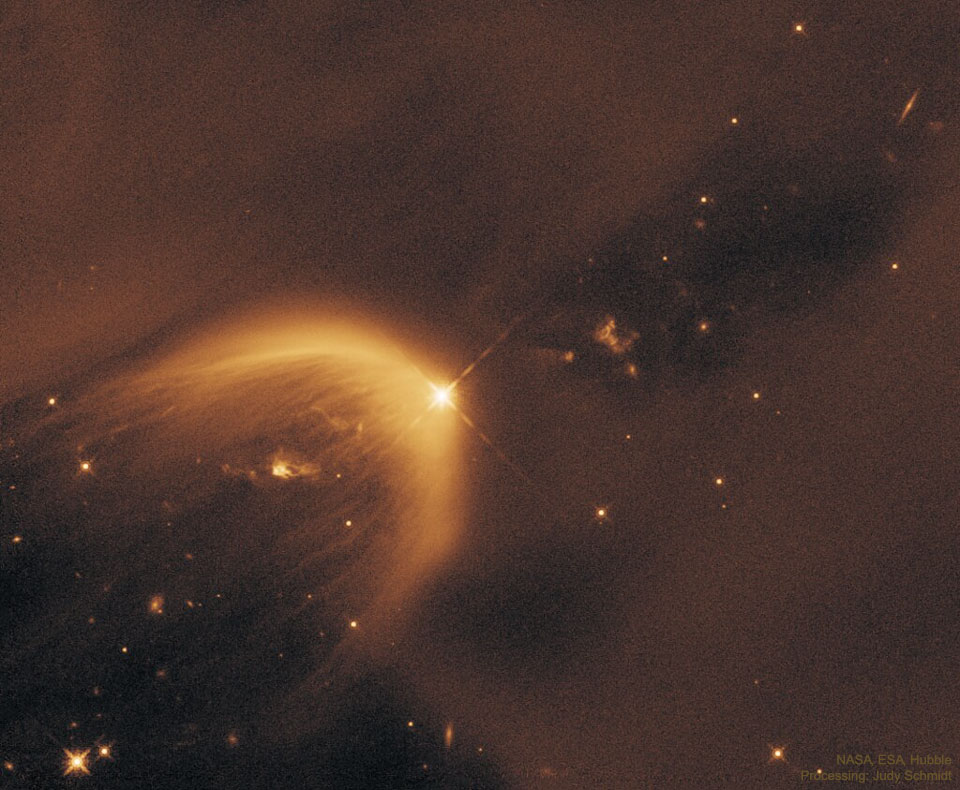LDN 1471 :風吹星腔
LDN 1471: A Windblown Star Cavity

發表日期:2024-11-17
這個不尋常的拋物線結構的成因是什麼? 這個被稱為 LDN 1471 的照明空洞是由一顆新形成的恆星造成的,拋物線頂端的亮源就是這顆恆星。 這顆原恆星正在經歷恆星外流,然後與英仙座分子云中的周圍物質相互作用,使其變亮。 我們只能看到空洞的一側--另一側被黑暗的塵埃遮擋住了。 拋物線的形狀是由於恆星風吹出的空腔隨著時間的推移不斷擴大造成的。在原恆星的兩側還可以看到另外兩個結構;這些結構被稱為赫比希-哈羅天體,同樣是由流出物與周圍物質的相互作用造成的。 不過,空腔壁上的條紋是由什麼造成的,仍然不得而知。 這張特寫圖片由美國宇航局和歐空局的哈勃太空望遠鏡拍攝,最初由斯皮策太空望遠鏡探測到。 探索你的宇宙隨機 APOD 生成器
原文:What is the cause of this unusual parabolic structure? This illuminated cavity, known as LDN 1471, was created by a newly forming star, seen as the bright source at the peak of the parabola. This protostar is experiencing a stellar outflow which is then interacting with the surrounding material in the Perseus Molecular Cloud, causing it to brighten. We see only one side of the cavity -- the other side is hidden by dark dust. The parabolic shape is caused by the widening of the stellar-wind blown cavity over time. Two additional structures can also be seen either side of the protostar; these are known as Herbig-Haro objects, again caused by the interaction of the outflow with the surrounding material. What causes the striations on the cavity walls, though, remains unknown. The featured image was taken by NASA and ESA’s Hubble Space Telescope after an original detection by the Spitzer Space Telescope. Explore Your Universe: Random APOD Generator
※ 本文由萌芽機器人自動轉貼自每日一天文圖(Astronomy Picture of the Day,APOD),原文為英文,正體中文是透過 DeepL 翻譯及 OpenCC 進行自動處理,內容僅供參考,若有任何錯誤之處還請見諒!
關於每日一天文圖:每日一天文圖網站是美國國家航空暨太空總署與密西根理工大學提供的服務,網站每天提供一張影像或圖片,並由天文學家撰寫扼要說明其特別之處。